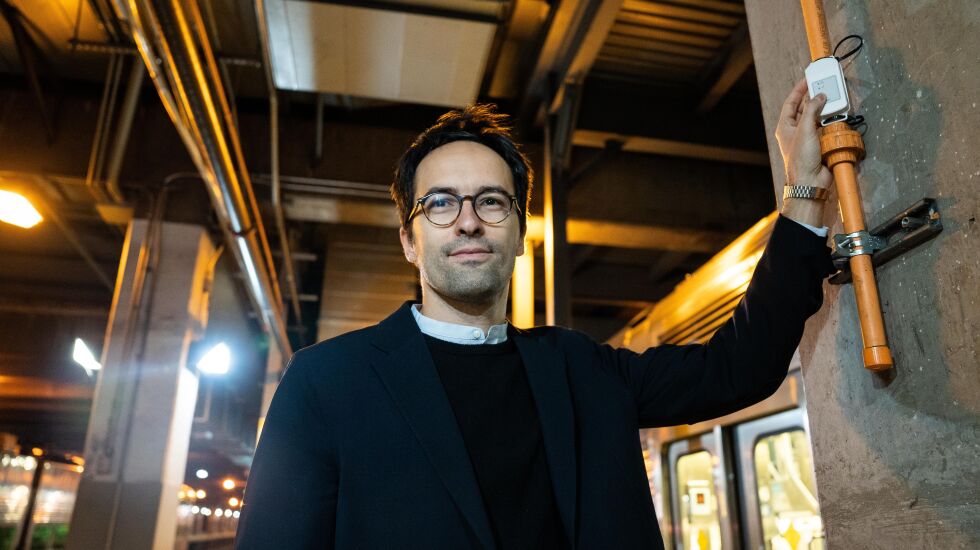
As the planet heated up due to global warming over much of the past century, so have spaces underneath the Loop.
That’s a cause for concern around the impact on buildings, new research from Northwestern University finds, though it also presents an opportunity to reuse that heat.
Building basements, the subway system, parking garages and other below-ground areas generate a lot of heat. That combined with warmer air on the surface has made for a significantly hotter underground, something old cities across the world experience.
So Alessandro Rotta Loria, an assistant professor of civil and environmental engineering, decided to find out how hot it gets under Chicago’s Loop, how that affects the soil and what that means in terms of potential damage to building foundations?
After setting up more than 150 temperature sensors in underground downtown spaces, he found wide variations.
“The undisturbed ground temperature in the Chicago area is about 52 degrees Fahrenheit,” Rotta Loria said in an interview. “In the heart of the Loop, we measured a ground temperature exceeding 70 degrees. In some underground structures, we measured more than 97 degrees.”
He called those hottest areas “significant drivers” of “underground climate change.”
That excessive heat causes layers of soil to expand or contract and the ground to swell. Building foundations slowly sink.
Next, he created computer models to look at how this continues to affect buildings and other structures over the next 30 years.
“The ground is deforming,” Rotta Loria said. “No existing civil structure or infrastructure is designed to withstand these variations.”
The impact represents “a silent hazard for the operational performance of civil infrastructure in Chicago and potentially other cities worldwide,” Rotta Loria’s team concluded.
Their research is published in the journal Communications Engineering, which is affiliated with the London-based scientific journal Nature.
Rotta Loria emphasizes that there is no imminent threat of buildings collapsing or any similar danger.

The shifting, sinking and swelling, of course, is not desirable. It can create cracks in foundations.
The good news is that the heat escaping from big building boiler systems and inefficient designs of the city’s earliest skyscrapers can actually be captured and reused as thermal energy, heating spaces and water in downtown buildings.
More research is needed and this idea that a potential problem can be turned into an energy resource may be applied to other cities, the team found.
The findings can be used to further study a way to capture underground heat throughout Chicago, too, potentially providing thermal energy to neighborhoods, Rotta Loria said.
The Loop was studied because of its density of buildings, second only to Manhattan in the U.S. It also has a lot of very old structures. There are more than 300 historic landmarked buildings in the Loop built before 1940, according to the city.
One morning in May, Rotta Loria walked through the lowest levels of the almost 100 year-old Union League Club building at 65 West Jackson Blvd., which includes a massive boiler system that extends deep underneath the street.
After a tour, it’s easy to understand that such an antiquated system would release plenty of excess heat into the surrounding area.
Rotta Loria calls these hot spots “subsurface heat islands.”
Born and raised in Turin, Italy, he received his doctorate in Switzerland and joined Northwestern four years ago.
The son of an artist and an anthropologist, Rotta Loria, 33, sees additional sustainability opportunities by studying the underground heat and its impact.
“Fortunately, we are in a position to transform this unwanted phenomenon into a significant opportunity for all cities worldwide,” Rotta Loria said.
He added that the research could inform Chicago officials to take actions.
For one, they should determine which buildings or groups of buildings contribute the most to the underground heat, he said.
Then decide which of those buildings could be made more energy efficient to prevent the escape of so much heat.
There should also be an assessment of buildings to see if there are any foundation or other structural issues around the impact of the heat, he said.
Amy Masters, director of government and external affairs for the Building Owners and Managers Association Chicago, said the research “presents promising opportunities” for downtown.
“We’ll need to find more creative and innovative solutions to energy use,” she added.

Brett Chase’s reporting on the environment and public health is made possible by a grant from The Chicago Community Trust.







